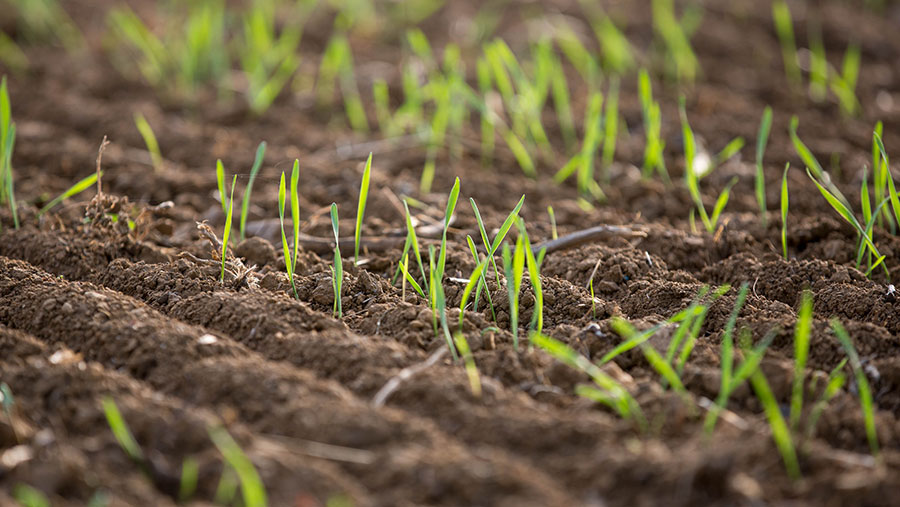5 tips to get the most from residual blackgrass herbicides
 © Tim Scrivener
© Tim Scrivener Residual soil-acting herbicides can account for up to half of the annual crop protection spend for winter wheat in bad blackgrass situations, so getting the best out of them is paramount.
North Essex and Suffolk-based ProCam agronomist, Mark Anstee, has five top tips to get the best weed kill.
1. Begin with a fine, firm seed-bed
Creating an even soil surface with a fine crumb structure leaves fewer inaccessible “hiding places” where blackgrass can germinate from and where herbicide sprays can’t reach, says Mr Anstee.
See also: How better aphid tracking could reduce barley yellow dwarf virus spraying
By contrast, clods shield the soil surface beneath them from sprays, and can fracture open later, releasing blackgrass seed to germinate from their centres, he warns.
2. Apply residual herbicides at the right time
Apply pre-emergence herbicides as soon as possible after drilling and certainly within 24-48 hours, advises Mr Anstee, unless conditions aren’t suitable.
“Waiting too long before spraying allows time for blackgrass to establish deeper roots before the herbicide is applied. Spraying earlier means the blackgrass roots will have to grow through the herbicide layer, which increases uptake. However, check the weather forecast to ensure the conditions are right for herbicide activity,” he says.
3. Keep residuals away from crop roots
Good control of blackgrass from residuals is one side of the coin, but the other is minimising the risk of them taking their toll on the crop, says Mr Anstee.
“Always drill deep enough, according to the herbicide label, so the crop roots are well below the herbicide layer – for example, seed covered by a minimum of 32mm of settled soil, or sometimes more.”
4. Keep residuals in the blackgrass root zone
At the same time as keeping herbicides away from the crop root zone, do everything possible to keep them in the blackgrass root zone, he says.
“There are products [adjuvants] available that help to hold the herbicide towards the top layer of soil in the blackgrass root zone, and minimise its movement down to the crop roots,” he says.
5. Achieve good spray coverage
Using the correct nozzles, such as angled ones, ensures the pre-emergence spray reaches all exposed surfaces of soil particles, as well as reducing drift.
Mr Anstee also points to the importance of forward speed. “This not only reduces the vortex behind the sprayer that can carry spray droplets away from their target, it also reduces boom bounce, which can lead to uneven dosing.”
Booms should be at the right height to reach the target, usually 50cm from the soil surface.

